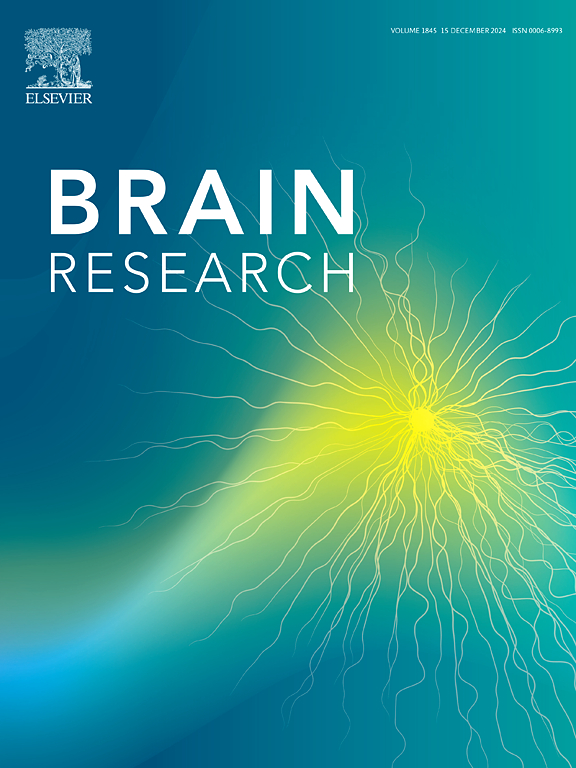Choroid plexus enlargement in idiopathic normal pressure hydrocephalus and concept proposal for noninvasive volume-reductive therapies
IF 2.7
4区 医学
Q3 NEUROSCIENCES
引用次数: 0
Abstract
Background
Aberrant CSF dynamics in idiopathic normal pressure hydrocephalus (iNPH) are associated with excessive CSF volume and impaired resorption. Yet, the role of choroid plexus (CP) size in development and progression of iNPH remains unknown. Moreover, newer noninvasive CP-targeted volume-reductive treatments for iNPH might benefit selected vulnerable patients to avoid problematic long-term ventricular shunting. However, there are no studies to date that describe CP size in iNPH patients.
Methods
We retrospectively studied brain 3T MRIs for 50 iNPH patients and 50 age and sex-matched healthy controls (HCs). We delineated areas and volumes of lateral ventricular CPs, then statistically compared both cohorts, with significance set at p < 0.05.
Results
In iNPH patients, CP volume (1.58-fold) alone, CP volume normalized to total intracranial volume (1.75-fold), and CP areas at four different locations and their combined values (1.24-fold) were highly significantly larger (p < 0.000) in iNPH patients.
Conclusion
The novel finding of CP enlargement in iNPH should guide and support future investigations into potentially interrelated pathogenetic mechanisms. It also benefits considerations of new noninvasive targeted therapies (such as MR-guided high intensity focused ultrasound, and radiosurgery) to partially ablate CP and reduce its CSF secretion as a conceivable alternative to conventional ventricular shunting.

特发性常压脑积水的脉络膜丛扩大及无创减容治疗的概念建议
背景:特发性常压脑积水(iNPH)患者脑脊液动力学异常与脑脊液体积过大和吸收受损有关。然而,脉络膜丛(CP)大小在iNPH发生和发展中的作用尚不清楚。此外,较新的无创cp靶向减容治疗可能有利于选择易感患者,以避免有问题的长期心室分流。然而,迄今为止还没有研究描述iNPH患者的CP大小。方法回顾性研究了50例iNPH患者和50例年龄和性别匹配的健康对照(hc)的脑3T mri。我们描绘了侧室CPs的面积和体积,然后对两个队列进行统计学比较,显著性设置为p <;0.05.结果iNPH患者单独CP容积(1.58倍)、CP容积与颅内总容积归一化(1.75倍)、4个不同部位CP面积及其组合值(1.24倍)均显著增大(p <;0.000)。结论这一新发现可指导和支持今后对可能相关的发病机制的研究。它也有利于考虑新的非侵入性靶向治疗(如磁共振引导的高强度聚焦超声和放射手术),以部分消融脑室并减少其脑脊液分泌,作为传统脑室分流的一种可想象的替代方案。
本文章由计算机程序翻译,如有差异,请以英文原文为准。
求助全文
约1分钟内获得全文
求助全文
来源期刊

Brain Research
医学-神经科学
CiteScore
5.90
自引率
3.40%
发文量
268
审稿时长
47 days
期刊介绍:
An international multidisciplinary journal devoted to fundamental research in the brain sciences.
Brain Research publishes papers reporting interdisciplinary investigations of nervous system structure and function that are of general interest to the international community of neuroscientists. As is evident from the journals name, its scope is broad, ranging from cellular and molecular studies through systems neuroscience, cognition and disease. Invited reviews are also published; suggestions for and inquiries about potential reviews are welcomed.
With the appearance of the final issue of the 2011 subscription, Vol. 67/1-2 (24 June 2011), Brain Research Reviews has ceased publication as a distinct journal separate from Brain Research. Review articles accepted for Brain Research are now published in that journal.
 求助内容:
求助内容: 应助结果提醒方式:
应助结果提醒方式:


